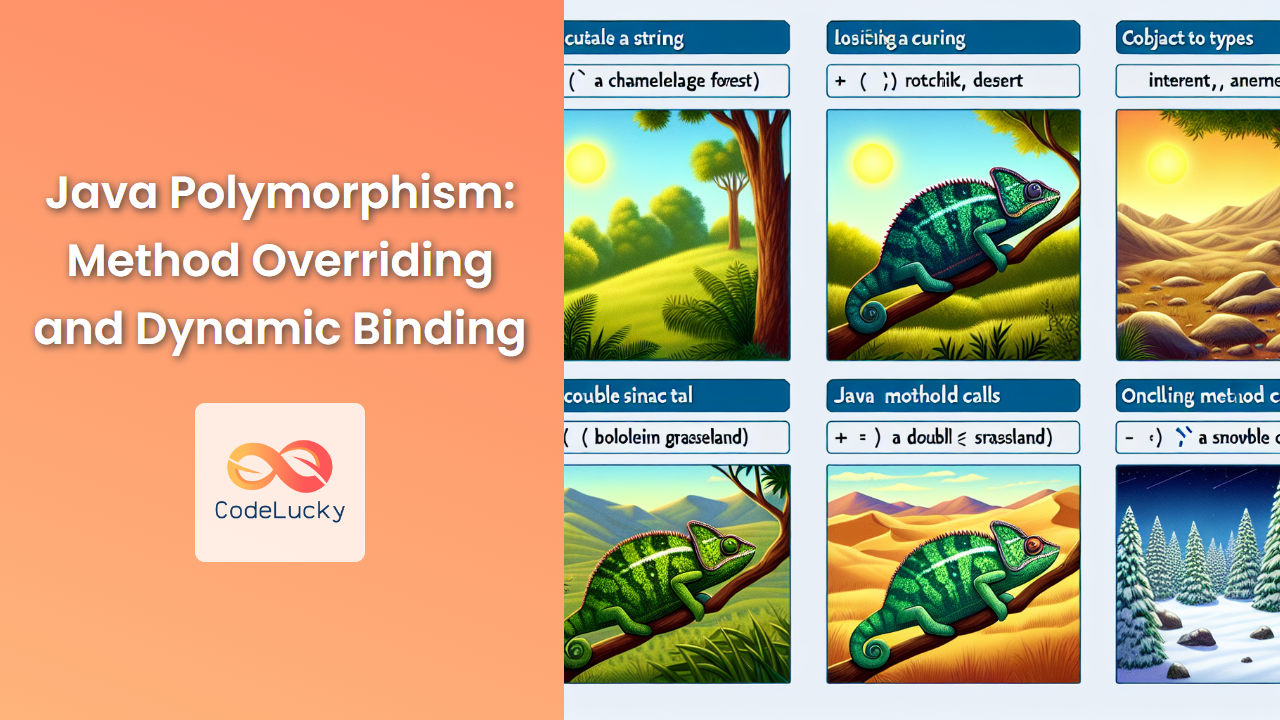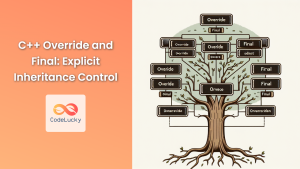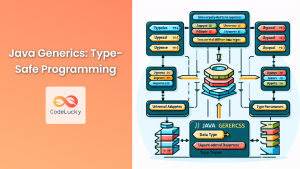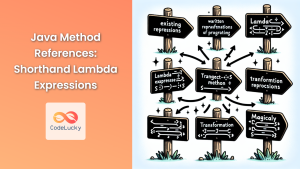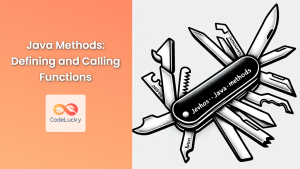Java, a cornerstone of modern software development, owes much of its power and flexibility to the concept of polymorphism. At the heart of this paradigm lie two crucial mechanisms: method overriding and dynamic binding. These features not only enhance code reusability but also provide the foundation for creating flexible and extensible software systems. In this comprehensive guide, we'll dive deep into these concepts, exploring their intricacies and demonstrating their practical applications through a series of illuminating examples.
Understanding Method Overriding
Method overriding is a fundamental aspect of polymorphism in Java. It allows a subclass to provide a specific implementation of a method that is already defined in its superclass. This capability is essential for achieving runtime polymorphism and implementing the principle of "one interface, multiple implementations."
🔑 Key Point: Method overriding occurs when a subclass declares a method with the same name, return type, and parameters as a method in its superclass.
Let's explore this concept with a practical example:
class Animal {
public void makeSound() {
System.out.println("The animal makes a sound");
}
}
class Dog extends Animal {
@Override
public void makeSound() {
System.out.println("The dog barks");
}
}
class Cat extends Animal {
@Override
public void makeSound() {
System.out.println("The cat meows");
}
}
In this example, we have a base class Animal with a makeSound() method. The Dog and Cat classes extend Animal and override the makeSound() method to provide their specific implementations.
Rules for Method Overriding
To successfully override a method, several rules must be followed:
-
Method Signature: The overriding method must have the same name, return type, and parameter list as the overridden method.
-
Access Modifier: The overriding method cannot have a more restrictive access modifier than the overridden method.
-
Exceptions: The overriding method must not throw new or broader checked exceptions.
-
Static Methods: Static methods cannot be overridden. They can be hidden, but that's a different concept.
-
Final Methods: Methods declared as
finalcannot be overridden.
🚫 Common Mistake: Attempting to override private methods. Remember, private methods are not inherited and thus cannot be overridden.
The Power of Dynamic Binding
Dynamic binding, also known as late binding or runtime polymorphism, is the mechanism that determines which method implementation to invoke based on the actual type of the object at runtime, rather than the reference type known at compile-time.
🔍 Fun Fact: Dynamic binding is one of the key features that make Java an object-oriented language, enabling true polymorphic behavior.
Let's see dynamic binding in action:
public class DynamicBindingDemo {
public static void main(String[] args) {
Animal myPet = new Dog();
myPet.makeSound(); // Output: The dog barks
myPet = new Cat();
myPet.makeSound(); // Output: The cat meows
}
}
In this example, even though myPet is declared as an Animal, the JVM determines the actual object type at runtime and invokes the appropriate makeSound() method.
How Dynamic Binding Works
-
Method Invocation: When a method is called on an object, the JVM starts looking for the method in the actual class of the object.
-
Method Search: If the method is not found in the actual class, the JVM looks in the superclass, and continues up the inheritance hierarchy until it finds the method.
-
Method Execution: Once found, the appropriate method is executed.
This process happens at runtime, allowing for flexible and extensible code structures.
Practical Applications of Method Overriding and Dynamic Binding
Let's explore a more complex example to illustrate the practical benefits of these concepts:
abstract class Shape {
abstract double area();
abstract double perimeter();
}
class Circle extends Shape {
private double radius;
public Circle(double radius) {
this.radius = radius;
}
@Override
double area() {
return Math.PI * radius * radius;
}
@Override
double perimeter() {
return 2 * Math.PI * radius;
}
}
class Rectangle extends Shape {
private double length;
private double width;
public Rectangle(double length, double width) {
this.length = length;
this.width = width;
}
@Override
double area() {
return length * width;
}
@Override
double perimeter() {
return 2 * (length + width);
}
}
public class ShapeCalculator {
public static void printShapeInfo(Shape shape) {
System.out.println("Area: " + shape.area());
System.out.println("Perimeter: " + shape.perimeter());
}
public static void main(String[] args) {
Shape circle = new Circle(5);
Shape rectangle = new Rectangle(4, 6);
System.out.println("Circle Info:");
printShapeInfo(circle);
System.out.println("\nRectangle Info:");
printShapeInfo(rectangle);
}
}
In this example:
- We have an abstract
Shapeclass with abstract methodsarea()andperimeter(). CircleandRectangleclasses extendShapeand provide their specific implementations.- The
ShapeCalculatorclass demonstrates dynamic binding through theprintShapeInfo()method, which can work with anyShapeobject.
When we run this program, we get:
Circle Info:
Area: 78.53981633974483
Perimeter: 31.41592653589793
Rectangle Info:
Area: 24.0
Perimeter: 20.0
This example showcases how method overriding and dynamic binding allow us to write flexible code that can work with different shapes without knowing their specific types at compile-time.
Advanced Concepts and Best Practices
The @Override Annotation
While not strictly necessary, using the @Override annotation is a best practice:
class Dog extends Animal {
@Override
public void makeSound() {
System.out.println("The dog barks");
}
}
This annotation helps catch errors at compile-time if you accidentally misspell the method name or use incorrect parameters.
Covariant Return Types
Java allows overriding methods to return a subtype of the return type declared in the superclass method:
class Animal {
public Animal reproduce() {
return new Animal();
}
}
class Dog extends Animal {
@Override
public Dog reproduce() {
return new Dog();
}
}
This feature, known as covariant return types, enhances the flexibility of method overriding.
Super Keyword in Overriding
Sometimes, you might want to extend the behavior of a superclass method rather than completely replacing it. The super keyword allows you to call the superclass method from the overriding method:
class EnhancedDog extends Dog {
@Override
public void makeSound() {
super.makeSound(); // Calls Dog's makeSound method
System.out.println("And wags its tail");
}
}
This approach is useful when you want to add functionality to the existing implementation rather than replacing it entirely.
Common Pitfalls and How to Avoid Them
-
Overloading vs. Overriding: Don't confuse method overloading (same method name, different parameters) with method overriding.
class Animal { public void eat() { } public void eat(String food) { } // Overloaded method } class Dog extends Animal { @Override public void eat() { } // Overridden method } -
Private Methods: Remember that private methods are not inherited and thus cannot be overridden.
-
Final Methods: Methods declared as
finalcannot be overridden. This is often used to prevent important methods from being changed in subclasses. -
Static Methods: Static methods belong to the class, not to instances. They can be hidden in subclasses but not overridden in the polymorphic sense.
Performance Considerations
While dynamic binding provides flexibility, it does come with a small performance overhead compared to static binding. However, modern JVMs are highly optimized and can often mitigate this overhead through techniques like inline caching and just-in-time compilation.
🚀 Pro Tip: In performance-critical applications, you might consider using final classes or methods to allow the JVM to optimize method calls more effectively.
Conclusion
Method overriding and dynamic binding are powerful features that form the backbone of polymorphism in Java. They enable developers to create flexible, extensible, and maintainable code by allowing subclasses to provide specific implementations of methods defined in their superclasses.
By mastering these concepts, you'll be able to design more robust and adaptable software systems. Remember to follow the rules of method overriding, use the @Override annotation, and be aware of the nuances like covariant return types and the use of the super keyword.
As you continue your journey in Java programming, keep exploring these concepts in your projects. The true power of polymorphism reveals itself when you apply it to solve real-world problems, creating code that's not just functional, but elegant and future-proof.
Happy coding, and may your methods always bind dynamically! 🖥️🚀

